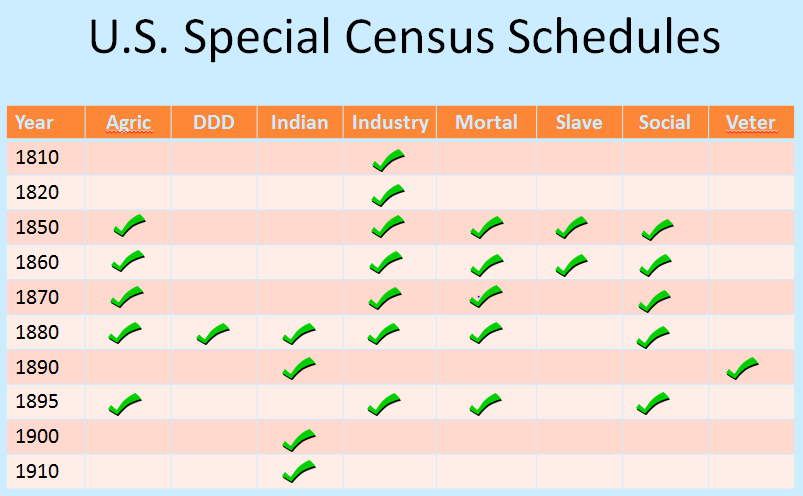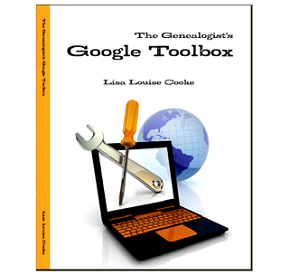Recent Updates: Online Genealogy Records at MyHeritage, Ancestry and Findmypast
At this time of sheltering at home, we’re fortunate that we can continue to pursue our favorite past time at home. Here are some of the latest genealogy records to come online this month. From my family to yours , stay safe and well friends.
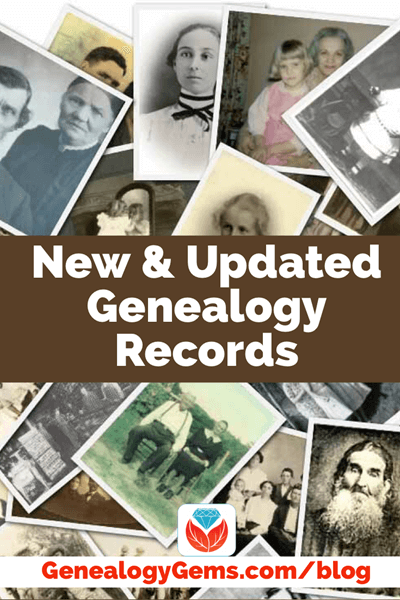
The latest genealogy records from Genealogy Gems.
Ancestry
The first two items in this list of new and updated records is important for everyone who is researching their family history. If you had difficulty finding an ancestor in the 1850 or 1860 in the past, now is the time to search. Ancestry has updated portions of these two important census records.
UPDATED – 1860 United States Federal Census
UPDATED – 1850 United States Federal Census
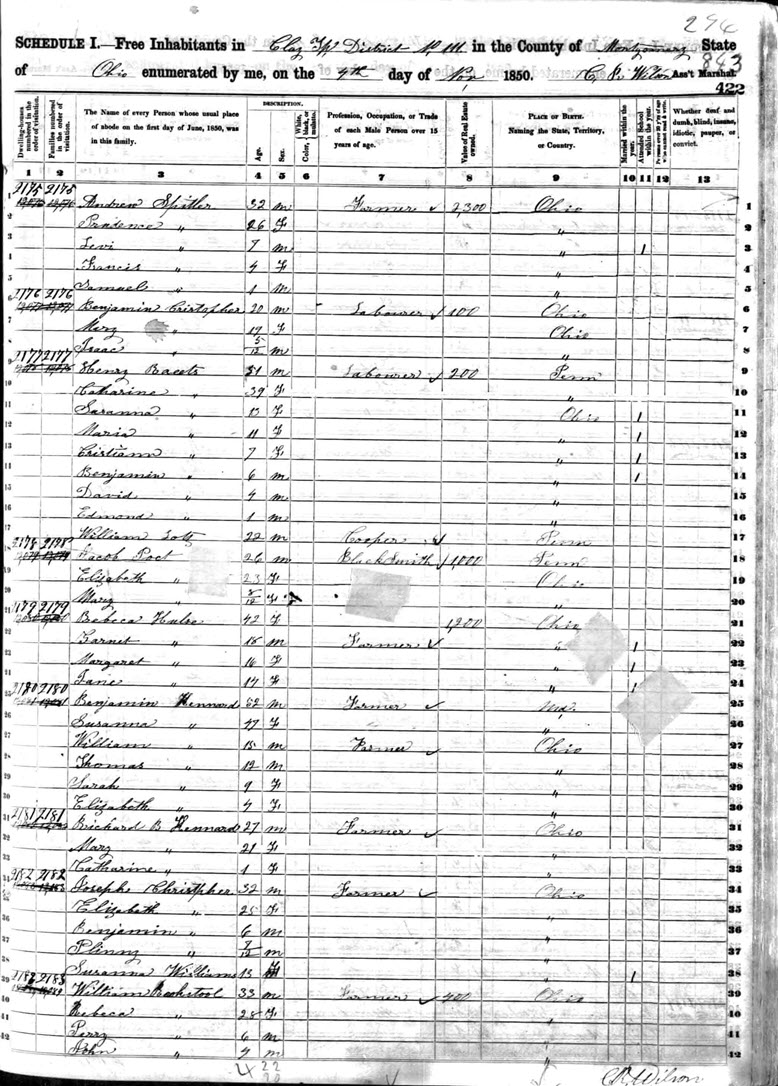
Example of the 1850 US Federal Census.
Speaking of the census, all genealogists are looking forward to the release of the 1950 US census. We don’t have that long to wait now. The 1950 US Census is due to be released to the public in April of 2022. Until then, be sure to read our article answering the most important questions about this census. Read 1950 Census Substitute: What To Use Until its Release Date.
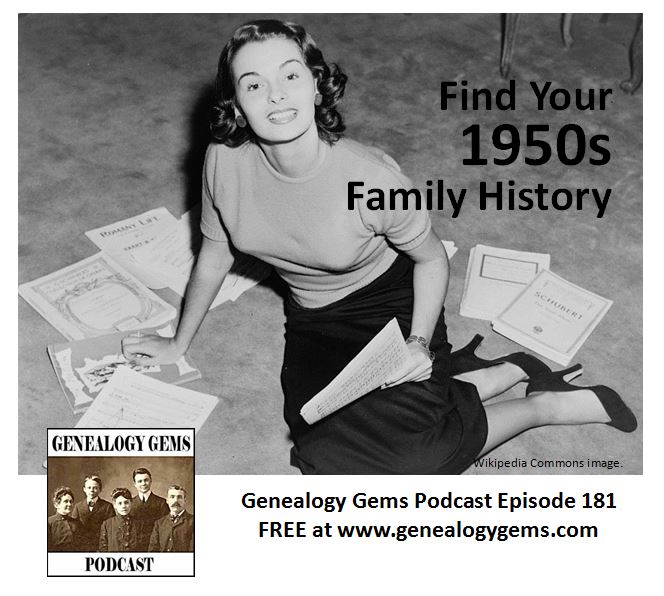
Listen to Genealogy Gems Podcast Episode 181 for more about finding your family history in the 1950s.
Let’s continue on looking through the newest records on Ancestry:
UPDATED – South Carolina, Death Records, 1821-1968
NEW – New York, Episcopal Diocese of Central New York Church Records, 1800-1970
NEW – New York State, Extradition Requisition and Mandate Registers, 1857-1938
NEW – South Carolina Probate Records, Files and Loose Papers, 1732-1964
NEW – South Carolina, Chesterfield County, Original Marriage licenses, 1911-1951
UPDATED Berlin, Germany, Births, 1874-1906
UPDATED – Montana, Divorce Records, 1943-1988
UPDATED – Montana, Birth Records, 1897-1988
UPDATED – Montana, Marriage Records, 1943-1988
UPDATED –U.S., Northern Pacific Railway Company Personnel Files, 1890-1963
One of the important aspects of this update according to Ancestry is that “changes were made to improve the performance of this collection. Family relationships such as parents and spouses are enabled to attach to your tree.
Note: This database does not yet include the entire collection of personnel files. Currently, only the file numbers listed in the browse are included. The remaining files will be added to this database at a later date.”
UPDATED – Ohio, Death Records, 1908-1932, 1938-2018
UPDATED – Ohio, Birth Index, 1908-1998
NEW – Irish Emigrants in North America, 1775-1825
According to Ancestry, “This present work is a consolidated reprint of two pamphlets by Mr. David Dobson that shed light on more than 1,100 Irish men and women and their families who emigrated to North America between roughly 1775 and 1825. As such, this volume adds to the list of 1,000 men and women compiled by Mr. Dobson in three earlier pamphlets in this series, which were published by Clearfield Company as Irish Emigrants in North America. Unlike the earlier collection, which was derived from a variety of Scottish and North American source records, the persons named in Irish Emigrants in North America, Parts Four and Five, were found primarily in contemporary newspapers in Canada and the United States. Each of the two lists of Irish persons is arranged alphabetically by the emigrant’s surname and, in the majority of cases, provides us with most of the following particulars: name, date of birth, name of ship, occupation in Ireland, reason for emigration, sometimes place of origin in Ireland, place of disembarkation in the New World, date of arrival, number of persons in the household, and the source of the information.”
NEW – Web: U.S., Congressional Medal of Honor Society Recipients, 1839 – 2012
UPDATED – Massachusetts, Boston Archdiocese Roman Catholic Sacramental Records, 1789-1900
NEW – Maine, Piscataquis County, Deed Books, 1838-1902
UPDATED – New York, New York, Index to Birth Certificates, 1866-1909
NEW – Maine, Veterans Cemetery Records, 1676-1918
NEW – Maine, Nathan Hale Cemetery Collection, 1780-1980
NEW – Maine, J. Gary Nichols Cemetery Collection, ca. 1780-1999
NEW – Maine, Faylene Hutton Cemetery Collection, 1780-1990
NEW – Maine, Tombstone Inscriptions, Surname Index, 1718-2014
NEW – Maine, York County, Probate Estate Files, 1690-1917
Findmypast
Here are the latest new and updated records from Findmypast, the home of the largest collection of UK parish records online.
Middlesex Baptisms
Unique to Findmypast, these records can reveal details about the start of your relatives’ lives in Middlesex. The collection has been enhanced with over 17,000 new records from the following parishes:
- Hampton
- Hayes
- Hornsey
- Stanwell
“Our thanks go to Cliff Webb and West Middlesex Family History Society for providing these latest additions.”
Cambridgeshire Burials
Over 6,000 burials from Mt Pleasant Cemetery, Wisbech, Cambridgeshire have joined the largest collection of British parish records online at Findmypast.
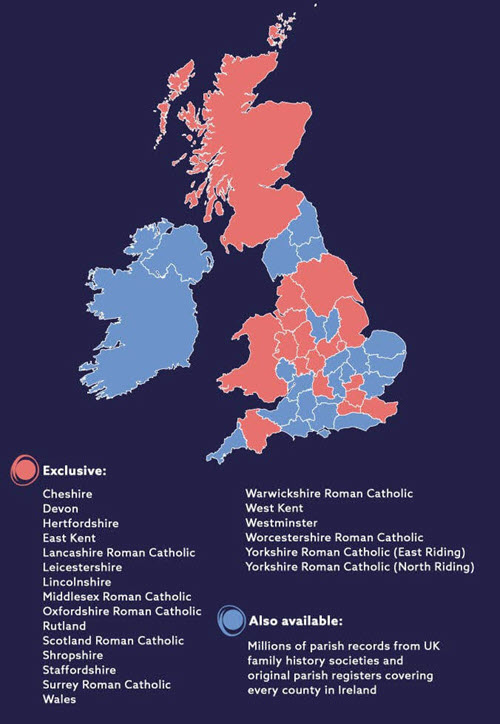
These latest additions join the largest collection of UK parish records online at Findmypast.
Click here to search the Cambridgeshire burial records.
“The burial records date from 1881 to 1925 and have been provided by Fenland Family History Society. You won’t find them anywhere else online.”
Jamaica, Civil Death Registrations
Discover your Caribbean roots with over 1.5 million new civil death registration records from Jamaica. Brought to you in partnership with FamilySearch, these death records can tell you more about your relative’s life and death in Jamaica.
As you trace your Jamaican past, be sure to also delve into these other useful resources:
- Jamaica Birth & Baptism Index 1752-1920
- Jamaica, Church Of England Parish Baptisms 1664-1880
- Jamaica, Civil Birth Registrations
- Jamaica, Civil Marriage Registrations
Dating as far back as the 1500s, our Jamaican family history records are essential for finding out more about your Caribbean ancestors. What’s more, they’ll provide hints for any Jamaican ancestors already on your Findmypast family tree.”
Newspapers
“The Caribbean-themed releases continue in our newspaper collection this week. We’ve added new papers from Jamaica and Ireland and updated a range of others. Brand new to the site are:
- Royal Gazette of Jamaica covering the years 1779-1781, 1793-1794, 1809, 1811-1819, 1824-1828, 1834-1836 and 1838-1840
- Carlow Sentinel covering the years 1832-1920
While the following newspapers have been supplemented with more issues:
- Merthyr Express has been updated with editions from 1871-1897, 1899-1910 and 1912-1945
- Truth has been updated with editions from 1900-1902, 1906-1907 and 1910
- Burton Chronicle has been updated with editions from 1896 and 1899-1900
- Newtownards Chronicle & Co. Down Observer has been updated with editions from 1875-1879 and 1881-1900
- Bradford Weekly Telegraph has been updated with editions from 1869-1878
- South Wales Gazette has been updated with editions from 1894
- Welshman has been updated with editions from 1836-1841, 1847, 1852, 1866, 1878
- Nuneaton Observer has been updated with editions from 1877-1896, 1898-1903
- Sligo Independent has been updated with editions from 1885
We’ve added almost a century’s worth of pages from one new newspaper along with substantial updates to 10 titles from England and Ireland this week. Brand new to the site is:
- Crewe Chronicle covering the years 1874-1887 and 1889-1972
As well as that, here is the list of papers that have had more pages added and the years covered:
- Halifax Evening Courier has been updated with editions from 1893-1896
- Midland Counties Advertiser has been updated with editions from 1854-1875, 1881, 1885, 1892-1896, 1941, 1943 and 1946
- Scarborough Gazette has been updated with editions from 1850, 1855 and 1868
- Newcastle Journal has been updated with editions from 1936-1937
- Huddersfield Daily Examiner has been updated with editions from 1874
- Torbay Express and South Devon Echo has been updated with editions from 1958-1967 and 1969-1972
- Leicester Daily Mercury has been updated with editions from 1926 and 1931
- Harrow Observer has been updated with editions from 1980
- Kensington Post has been updated with editions from 1986
- Newcastle Evening Chronicle has been updated with editions from 1893
Newspapers are a goldmine of information on your family’s past. Not only could you find your ancestors making headlines, but you’ll also get insight into the world they lived in, the kind you won’t find in other records.”
MyHeritage
MyHeritage photos
Now through April 23, 2020, you can enjoy Free and Unlimited Access to MyHeritage In Color™. Read more about that here.



